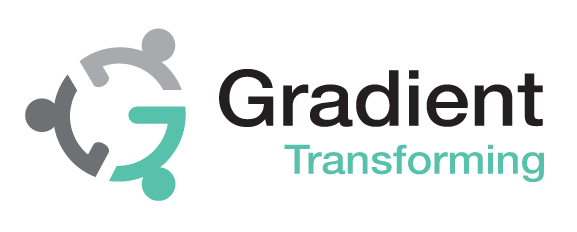Does your ERP system need an upgrade?
Business processes do not remain the same in an ever-changing market place. To stay competitive in your industry, you must be adaptable to change. Don’t let your software or systems allow you to fall behind. The indicators below should let you know when the time is right to upgrade or replace your current ERP solution. Also, if you are already asking yourself “Is my ERP system out of date?” Then chances are, the answer is yes!
As businesses and markets evolve, an ERP system will start to show signs of diverging from alignment and becomes less and less of a business enabler. You wouldn’t run a car day in, day out and expect it to still be in the same condition as when you first bought it. Your ERP system is no different. It works tirelessly to make your business more efficient, so it should come as no surprise that your system needs regular health checks. A Gradient ERP MOT is a health check of a business system. An ERP MOT aims to confirm whether it’s still fit for purpose and seeks to support the ERP lifecycle from post-go-live onwards.
If you resonate with any of our thoughts below, then it may be your systems turn for an MOT.
Mobile Functionality
The ability to be mobile depends on the access to technology your company has. There are many benefits of adding mobile functionality to your ERP solution. For your employees, you can loosen the ties between business and location, offer flexible working patterns, and make your business information available anytime, anywhere.
You are likely to save costs and increase the efficiency of your workforce when you choose to go mobile. A traditional system requires your staff to be in the office to access relevant information. If you upgrade your ERP system, your workers can obtain information on the move. You can expect efficiency levels to soar as you are allowing your staff to maximise their time when they are both in and out of the office.
Cost-saving will be most notable in your investment in IT. There are over 20 billion devices connected to the Internet today, which works out to three for every single person on the planet! With that figure in mind, your staff will probably have access to a device that they can use for work under a BYOD device policy. According to a report from Cisco, companies favouring BYOD make an annual saving of $350 per year, per employee.
Lack of vendor support
One of the most popular reasons for a new or updated system is indicative of the age of the current solution you are using. The older the system, the less likelihood there remains support available from the vendor. New software versions are released all of the time, especially these days. You are most likely to get left behind if you aren’t on the ball with the refreshers, you might relate to this if you use an Apple iPhone. After you miss a few iOS updates, you will have noticed suffering functionality and incompatible apps.
The cost could become a deciding factor when evaluating whether to stick with your older system. If the vendor is no longer offering support, then you may have to outsource, which will most probably be more expensive and less accessible. Increasing maintenance fees and licences that are hard to come by won’t contribute positively to your company’s growth strategy. A sound ERP system should streamline the growth of your team and not hinder it.
Non-compliance
New laws and regulations are not uncommon in the workplace. To do your job accurately and legally, you must comply with any changes made by governments and the state. Complying often involves changing processes or usual ways of working to adapt to new regulations. Take the recent introduction of the Making Tax Digital (MTD) Initiative as an example.
Many people assume that an ERP system will automatically handle compliance regulations. Don’t be so naïve! If your system is in tip-top condition, it may well be compliant. However, if it’s not had an update in a few years, you can bet it’s not. Non-compliance can lead to audits, penalties and fines which are easily avoidable.
Old habits die hard
You’ve noticed an array of spreadsheets are rearing their heads of late. The monthly and quarterly figures are disparate, and things aren’t adding up like they used to. Your workforce has created workarounds to resolve problems they have with the system. I don’t blame them. There is nothing worse than having to complete sluggish tasks because the software is no longer fit for purpose, slow or inefficient. The job of an ERP system is to streamline business processes; however, if it’s outdated, then it will more than likely be making things complicated.
Our point here is to speak to your staff and find out what the problems are first. Ask them what they like about the system and also what they don’t. Find out from them what they think could be done to improve things. Once you choose to upgrade or replace the ERP system, be sure to set time aside for staff training on the new software.
Customisation and Adaptability
One of the business’s top priorities is to ensure that all systems work seamlessly with one another. An old ERP system that is not nurtured can cause irritation and seriously low levels of inefficiency.
Your business isn’t the same as it was this time last year let alone ten years ago. Has your company experienced a shift in focus, operational adjustments or a change in leadership? If yes, then you may have noticed your ERP system never did quite keep up. Your system doesn’t need to be changed every couple of years, but it does need evaluating from time to time. You need to assess whether or not your initial investment is still paying off, or is it time to re-evaluate and reinvest?
Upgrade your ERP system with Gradient
If your ERP system doesn’t manage your business operations, then, likely, you don’t have the power to drive performance across your company. A practical solution should manage the data exchange between all major and minor functions across all the departments. Without this synergy, you are operating in silos allowing areas of the business to work in isolation.
Now, we’ve pointed out some pain points that you might feel or hear, and we can help you to weed them out. The decision for you will be down to the cost involved in either updating your existing system to meet your needs or should you replace it? Our ERP MOT will help you to decide.

